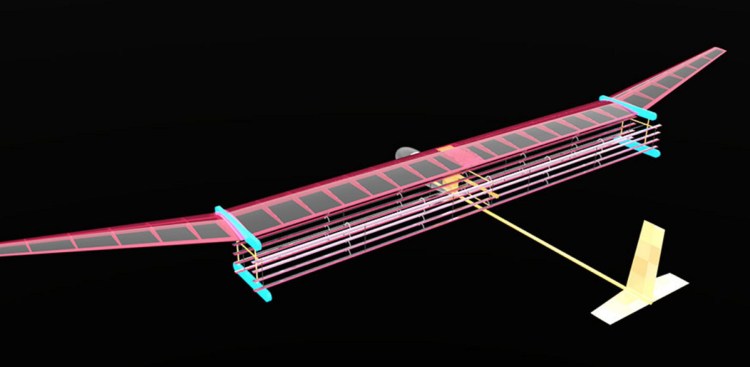The first successful flight of the experimental plane ended badly. The plane, which weighs about 5.5 pounds and has a wingspan of 16 feet, flew steadily, but the researchers didn’t cut the power quickly enough and it kept going until it crashed into the far wall of the gymnasium. The entire test flight, conducted last December at MIT, took about 15 seconds.
“That’s what you call an emotional journey, I guess, starting off with a successful flight and ending with a pile of plane,” said Steven Barrett, an MIT professor of aerospace engineering.
The researchers rebuilt the plane and then flew it nine more times and, on Wednesday, Barrett and his colleagues published in the journal Nature what might someday be viewed as a breakthrough paper in aeronautics. They have invented a solid-state airplane. It runs on electricity from batteries. It makes no noise. It generates no exhaust. Its propulsion system has no moving parts. It has no propellers, no turbines, not even a twisted rubber band.
USING ‘IONIC WIND’ CONCEPT
This futuristic aircraft was inspired by “Star Trek” and the graceful journeys of the starship Enterprise, Barrett told reporters in a teleconference. He said that he’s a Trekkie and that about a decade ago, when he began pondering new forms of aircraft propulsion, he imagined that in the future there should be “planes that fly silently with no moving parts.”
That led him and his colleagues to a concept called “ionic wind.” The researchers used batteries and an innovative power converter to create an electrical field along a fine wire. As explained in a separate Nature commentary by Franck Plouraboué, a senior scientist in fluid mechanics at Toulouse University in France, the electric field agitates free electrons and makes them collide with air molecules and ionize them, which generates more electrons, leading to more collisions – a chain reaction with the net result of sending air molecules in an “ionic wind” streaming toward a structure called a collector.
EXCITING POSSIBILITIES
All of this had been imagined half a century ago but was deemed impractical for creating an airplane. The generation of the ionic wind was simply too inefficient. But Barrett and his team have made a number of advances over the past decade. A major one was developing the power converter that let them step up the voltage of the batteries to extremely high levels.
“Many prototypes of that were fried,” Barrett said.
They also experimented with various plane designs before crafting one of optimal size, shape and weight.
It’s too soon to say exactly how this could be applied. There was no one aboard the plane, no significant cargo, and it should be noted that all this happened indoors, with an initial thrust provided by bungee cords. It’s not clear that this can be scaled up and employed for large aircraft, though Barrett is hopeful.
Plouraboué said the new plane creates “an opening for future progress, in a field which is now going to burst.” He noted that any scaling up of the concept for use in large planes would require proof that this technology is safe.
Send questions/comments to the editors.


